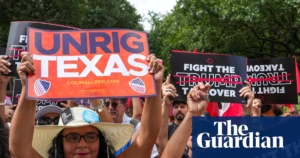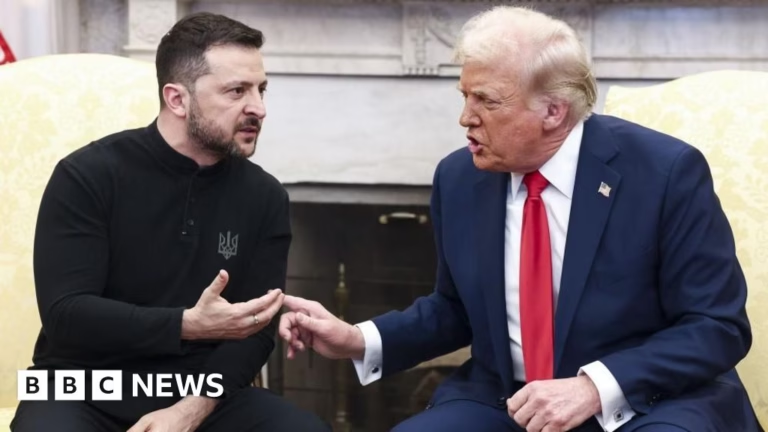US President Donald Trump may have taken a risk by inserting the US into the conflict between Iran and Israel, but it may have paid off.
Trump announced a potential ceasefire between the countries that could lead to a lasting peace.
If the American president has ended the “12 Day War”, it would halt a conflict that seemed to be engulfing the region, along with pulling America in after US airstrikes hit Iranian nuclear facilities on Saturday.
“Provided that the Israeli regime stops its aggression against the Iranian people by 4 am Tehran time,” Iranian Foreign Minister Abbas Araghchi said, “we have no intention to continue our response afterwards.”
It may not be called a ceasefire, but as the 04:00 deadline arrived in Tehran the Israeli attacks reportedly came to a halt. The two parties appear to be reducing tensions.
This development comes after a tumultuous day when Iran followed through on its promise to retaliate for Saturday’s US strike.
All the Iranian missiles directed at the massive US base in Qatar were intercepted and there were no American casualties or damage.
During his address to the nation on Saturday night, President Trump warned that there would be an overwhelming response if there were any attacks on US interests.
For more than 24 hours, the world waited to see what Iran would do. Once Iran had acted, attention swung back to the US president, and after a few hours, he had his first say.
“Iran has officially responded to our Obliteration of their Nuclear Facilities with a very weak response, which we expected, and have very effectively countered,” Trump posted on his social media site.
He said that Iran had gotten it out of their “system” and added that “perhaps Iran can now proceed to Peace and Harmony in the Region”.
While the damage is reported to be limited, Trump seemed to hold back, hoping that the Iranians would be willing to negotiate seriously. And, behind the scenes, the White House says he was talking to Qatari mediators and Israeli Prime Minister Benjamin Netanyahu to work out the details of the ceasefire.
Trump’s attack on Iran was risky, but might pay off.
In January 2020, Trump ordered the targeted killing of Iranian Revolutionary Guard leader Qasem Soleimani in Baghdad.
Then, Iran launched missiles at military bases in Iraq, injuring more than 100 American soldiers, but the US chose not to escalate.
That, along with the advance notice Iran provided to the Qatari government prior to the launch, for which Trump said he was grateful, suggests the Iranians are seeking proportionality, not escalation.
For most of the day, Trump focused on the oil price, American media coverage and a suggestion by former Russian President Dmitry Medvedev that an outside nation provide Iran with nuclear weapons.
US officials have stated that this president follows through on his threats, in contrast with some of his predecessors.
If Iran were to launch another round of attacks – and there were American deaths or significant damage – pressure would mount for Trump to respond.
For the moment, however, both countries appear willing to entertain the idea of reducing the conflict.









